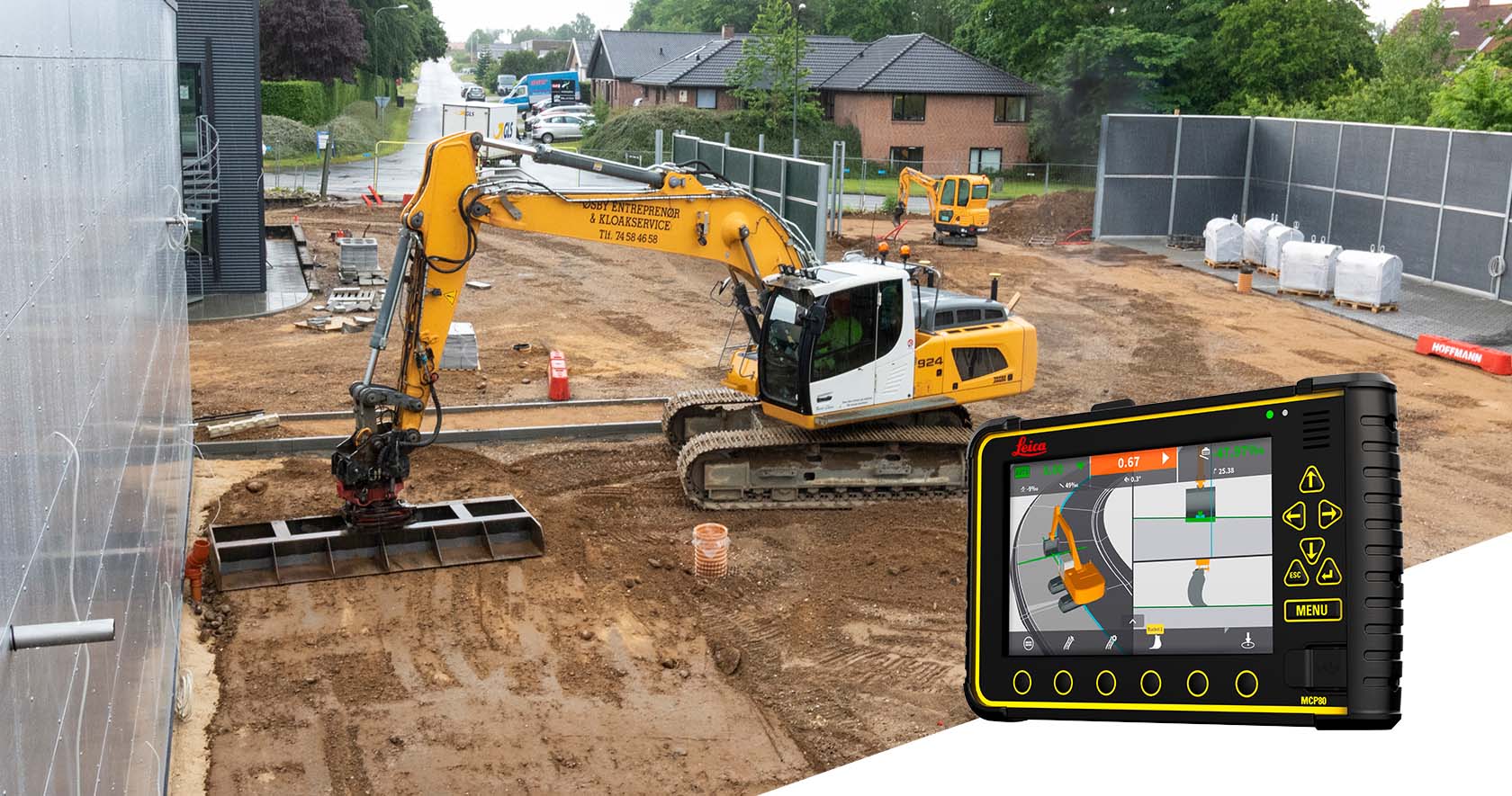The excavation industry has always been an essential part of construction, mining, and various other sectors. However, with advancements in technology, traditional excavation machinery has undergone remarkable transformations. One such advancement is the integration of smart sensors into excavation equipment. These sensors are revolutionizing the way excavation projects are managed and executed, bringing numerous benefits to the industry. In this article, we explore the rise of smart sensors in excavation equipment, their applications, and the impact they have on the efficiency, safety, and sustainability of excavation projects.
1. What Are Smart Sensors in Excavation Equipment?
Smart sensors are electronic devices embedded in excavation machinery that collect and transmit data in real-time. These sensors use various technologies, including GPS, accelerometers, and pressure sensors, to monitor different aspects of the machine’s operation. They can track machine performance, measure environmental conditions, and detect potential issues before they escalate into costly problems.
In excavation equipment, these sensors are typically integrated into key components such as the arm, bucket, and hydraulic systems. They provide operators and fleet managers with continuous feedback, allowing them to make informed decisions and optimize performance. The integration of smart sensors is part of a broader trend toward automation and digitalization in construction and heavy machinery.
2. Improved Operational Efficiency
One of the primary benefits of smart sensors in excavation equipment is the improvement in operational efficiency. These sensors provide real-time data on the performance of the machinery, including fuel consumption, engine temperature, and hydraulic pressure. This information allows operators to monitor the machine’s condition and adjust its settings to optimize performance, ultimately reducing downtime and improving productivity.
For example, if the sensors detect that a particular component is running at less than optimal efficiency, operators can take corrective action before it leads to a breakdown. This predictive maintenance capability ensures that the equipment operates smoothly for longer periods, reducing the need for costly repairs and replacements.
Moreover, smart sensors can help operators fine-tune their equipment to perform specific tasks more effectively. Whether it’s adjusting the bucket tilt angle or optimizing digging speed, the sensors provide the necessary feedback to enhance performance, thus reducing the time required to complete excavation tasks.
3. Enhanced Safety and Risk Management
Safety is always a top priority on excavation sites, as they can present a variety of hazards to workers. Smart sensors play a crucial role in enhancing safety by providing operators with real-time alerts about potential risks. For instance, if a sensor detects that the machine is operating at an unsafe angle or approaching a dangerous area, it can alert the operator to take corrective action.
Additionally, smart sensors can monitor the condition of the surrounding environment. For example, if the sensors detect unstable soil or vibrations indicating a potential collapse, they can trigger safety protocols to alert workers and prevent accidents. This ability to proactively identify and mitigate risks helps create a safer working environment for everyone on the site.
Moreover, remote monitoring capabilities allow fleet managers and supervisors to track the location and condition of equipment in real-time. This reduces the need for manual inspections and ensures that machines are being used properly, preventing accidents caused by human error.
4. Real-Time Data for Better Decision Making
One of the most significant advantages of smart sensors is their ability to provide real-time data. This data is invaluable for operators, managers, and decision-makers, as it enables them to make informed choices based on accurate, up-to-date information. Instead of relying on manual reports or guesswork, the data from smart sensors allows teams to make decisions that can improve both short-term performance and long-term planning.
For instance, by monitoring fuel consumption, operators can adjust their techniques to minimize fuel usage, reducing operational costs. Additionally, tracking machine usage patterns helps identify underused equipment, which can then be redeployed to more productive tasks. This data-driven approach improves efficiency and resource management, ultimately contributing to the success of the project.
Furthermore, fleet managers can use the data collected by smart sensors to make better long-term decisions about maintenance schedules and equipment replacement. By analyzing usage patterns, they can determine when a machine is likely to need maintenance or when it may be time for an upgrade, allowing for more strategic planning and cost-saving measures.
5. Environmental Benefits and Sustainability
The integration of smart sensors into excavation equipment also offers significant environmental benefits. By optimizing machine performance and reducing fuel consumption, smart sensors contribute to more sustainable operations. These sensors help identify inefficiencies, allowing operators to reduce emissions and minimize their environmental footprint.
Additionally, the sensors can track environmental conditions on the job site, such as soil stability and weather patterns, to ensure that the excavation process is carried out in an environmentally responsible manner. For example, sensors can alert operators if the soil conditions are unsuitable for excavation, preventing unnecessary damage to the environment and reducing the risk of erosion.
As sustainability becomes an increasingly important consideration in the construction and excavation industries, smart sensors provide an effective tool for minimizing environmental impact while still achieving the desired results.
6. Remote Monitoring and Fleet Management
Another key advantage of smart sensors is their ability to enable remote monitoring and fleet management. With the data provided by these sensors, fleet managers can monitor the status of all machines in real-time, regardless of their location. This capability is particularly valuable for large construction projects or those spread across multiple sites.
Fleet managers can track the location, usage, and performance of each machine, allowing them to optimize the deployment of resources and ensure that equipment is being used effectively. If a machine is underperforming or experiencing issues, fleet managers can intervene quickly, directing maintenance teams or adjusting operations to prevent further problems.
Remote monitoring also allows managers to track compliance with safety regulations and operational guidelines, ensuring that equipment is being used properly and that workers are adhering to safety protocols. This level of oversight improves both operational efficiency and safety across the entire fleet.
7. Cost Savings and Return on Investment
While the initial investment in smart sensors and the necessary technology may be significant, the long-term financial benefits are substantial. By optimizing machine performance, reducing downtime, and extending the lifespan of equipment, smart sensors contribute to significant cost savings. Predictive maintenance helps prevent costly repairs by identifying issues early, while real-time data allows operators to fine-tune equipment for maximum efficiency.
In addition, the improved safety and risk management provided by smart sensors reduce the likelihood of accidents and costly insurance claims. As a result, the return on investment for smart sensors in excavation equipment can be realized relatively quickly, making it a wise choice for companies looking to enhance productivity and profitability in the long run.
8. The Future of Smart Sensors in Excavation Equipment
The use of smart sensors in excavation equipment is still in its early stages, and as technology continues to advance, the capabilities of these sensors will only improve. We can expect to see even more sophisticated sensors that offer greater accuracy, faster data processing, and enhanced integration with other technologies, such as artificial intelligence and machine learning.
As the excavation industry embraces the full potential of smart sensors, it will likely see even greater improvements in efficiency, safety, and sustainability. With their ability to collect and analyze vast amounts of data, smart sensors are poised to become an integral part of the future of excavation machinery.
Conclusion
The rise of smart sensors in excavation equipment represents a significant leap forward in the construction and heavy machinery sectors. These sensors improve operational efficiency, enhance safety, provide real-time data for better decision-making, and contribute to more sustainable practices. As the technology continues to evolve, smart sensors will play an increasingly vital role in shaping the future of excavation equipment, offering companies the opportunity to optimize performance, reduce costs, and improve safety on job sites. The integration of smart sensors is no longer just a luxury—it is becoming a necessity for businesses looking to stay competitive in an ever-evolving industry.






